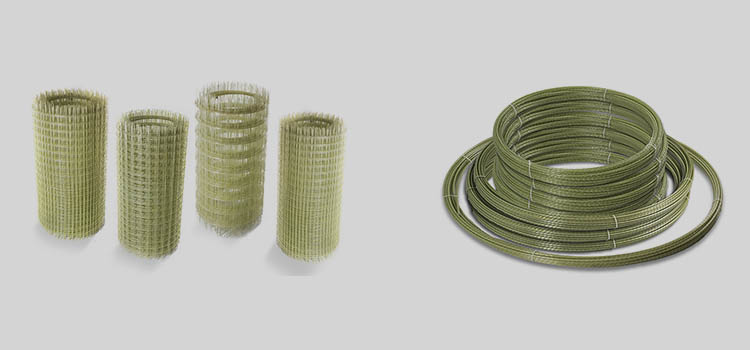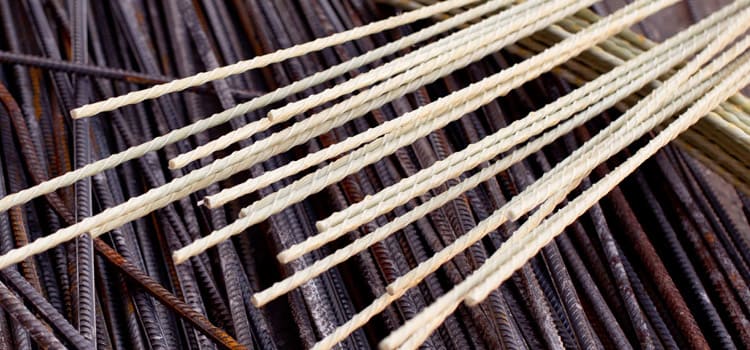Properties of Fibreglass Reinforced Plastic Bars
SUBMIT YOUR APPLICATIONSubmit your application
Sections
- Fibreglass Reinforced Plastic Bars
- Product Range and Prices
- Fibreglass reinforced plastic bars 4 mm
- Fibreglass reinforced plastic bars 6 mm
- Fibreglass reinforced plastic bars 7 mm
- Fibreglass reinforced plastic bars 8 mm
- Fibreglass reinforced plastic bars 10 mm
- Fibreglass reinforced plastic bars 12 mm
- Fibreglass reinforced plastic bars 14 mm
- Fibreglass reinforced plastic bars 16 mm
- Properties of Fibreglass Reinforced Plastic Bars
- Characteristics
- Fibreglass mesh
Fibreglass Reinforced Plastic Bars being a typical material used for reinforcing concrete structures are definitely the newest and most relevant composites having special physical and technical characteristics ahead of their traditional metal analogues. Demonstration of the positive or negative properties of the fibreglass frame directly depends on the conditions of its use.
Prospects for using multicomponent reinforcing bars are attributable to a number of their positive qualities:
- Corrosion Resistance. Fibreglass reinforced plastic frame for reinforcing concrete structures is highly resistant to corrosion processes. They may not be affected by the negative factors of alkaline and aggressive environments, salt, chemical additives and substances, as well as other products of various processes. These qualities increase the popularity and priority need for fibreglass reinforced plastic bars for reinforcing structures of coastal and waterside facilities, pavements, coatings in livestock breeding complexes, food and processing industries, treatment plants and settling tanks.
- Dielectric Properties. Fibreglass reinforced plastic bars do not allow passing electric current thus creating their special value in reinforcing walls and entablements in certain research facilities. These are construction complexes where the use of steel frames is not allowed, since it affects the operation results of the instruments used for measuring electromagnetic waves. This is especially critical in medical institutions where magnetic resonance imaging complexes are installed. As for the civil buildings, the absence of a screen in the premises eliminates the problem of the radio wave passage and makes them as accessible as possible for mobile communications (telephony, Internet). Also, when replacing steel reinforcing bars with fibreglass reinforced plastic bars the negative impact of the screen on the human biofield disappears, which makes his life environmentally friendly and safe.
- Light Weight. Fibreglass Reinforced Plastic Bars are much lighter than a steel frame. And the high strength of the structures, where the reinforcing bars are designed for stretching, allows the weight difference to be increased up to 2 times. The use of our reinforcing bars in concrete structures allows making them lighter thus reducing the load on the foundation. Here, it is also very important to note that there is no risk of corrosion, which reduces concrete by one more, additional, protective layer against external factors. The lightness of the reinforcing bars makes it possible to simplify the process of its transportation and installation, reduce financial and time costs being very important for any project.
- Temperature Resistance. A positive property of the fibreglass reinforced plastic bars is a complete lack of sensitivity to seasonal phenomena and temperature differences. The operation temperature range of the main reinforcing bar components varies from -70 to +100 C. Various temperature conditions and a high humidity coefficient do not affect the construction and operation of concrete blocks with a fibreglass reinforced plastic frame. When concreting some structures, steaming is used to reduce the hardening time of concrete. During this process, the reinforcing bars within the structure will be exposed to high temperature and moisture. Afterwards, the facilities will be used at high positive and low sub-zero temperatures. Such serious test for steel reinforcing bars entails the risk of accelerated corrosion. The influence of these conditions on fibreglass will be minimized.







